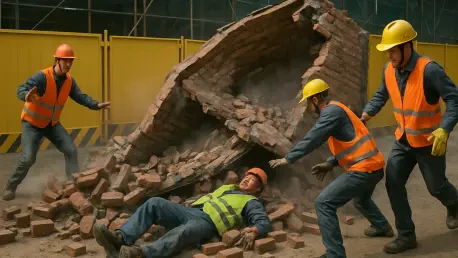In a heartbreaking reminder of the importance of workplace safety, a devastating incident at a construction site in Bath, UK, claimed the life of Gary Anstey, a 57-year-old employee who was struck by a collapsing retaining wall. This tragedy, which unfolded several years ago, has recently culminated in significant legal consequences for the responsible company, shedding light on the critical need for stringent safety measures in the construction industry. The incident not only resulted in an irreplaceable personal loss for a family but also exposed systemic failures that continue to plague the sector. As details of the event and its aftermath emerge, the story serves as a stark warning to firms about the consequences of neglecting proper planning and oversight. The human cost, combined with the legal repercussions, underscores a broader call for accountability and reform to ensure such preventable accidents do not recur.
Unveiling the Incident and Its Causes
Examining the Fatal Collapse
The catastrophic event that led to Gary Anstey’s untimely death stemmed from a failure to uphold basic safety standards during the construction of a 1.8-meter-high retaining wall at a school site. According to the investigation by the Health and Safety Executive (HSE), the wall became dangerously unstable when a large load of aggregate was placed against it without adequate support or design considerations. This oversight proved fatal, as the structure could not withstand the imposed weight, leading to its sudden collapse. The HSE’s findings pointed to a glaring absence of proper planning and supervision, elements that are fundamental to ensuring stability in temporary works. Such negligence highlights how easily preventable errors can escalate into life-altering tragedies when safety protocols are ignored. The incident serves as a critical case study for understanding the risks inherent in construction when guidelines are not followed.
Root Causes of the Safety Breach
Delving deeper into the circumstances surrounding the collapse, it becomes evident that the company responsible, H. Mealing & Sons Limited, failed to adhere to essential HSE guidance on temporary structures. This guidance emphasizes the necessity of designs capable of handling expected loads, alongside comprehensive training and documented plans to maintain structural integrity—standards that were conspicuously absent in this project. The lack of coordination and oversight meant that workers were exposed to unnecessary risks, ultimately costing a life. Additionally, the investigation revealed that these lapses were not isolated but reflected a broader pattern of inadequate safety measures within the firm’s operations. This systemic failure underscores the urgent need for construction companies to prioritize robust safety frameworks, ensuring that every project is executed with meticulous attention to detail and compliance with regulatory expectations.
Legal Repercussions and Broader Implications
Consequences Faced by the Company
In the wake of the tragedy, H. Mealing & Sons Limited faced significant legal accountability for their negligence. The firm pleaded guilty to breaching key provisions of the Health and Safety at Work Act, acknowledging their failure to protect employees from foreseeable hazards. As a result, a substantial fine of £56,775 was imposed, along with an additional £44,000 in costs, reflecting the severity of the violation. HSE Inspector Ian Whittles criticized the incident as a clear outcome of poor planning and coordination, issues he described as disturbingly common in the industry. This legal outcome not only penalizes the company for their shortcomings but also sends a powerful message to other firms about the financial and reputational risks of disregarding safety obligations. It reinforces the principle that protecting workers is not optional but a fundamental duty that must be upheld at all costs.
Personal Impact and Industry-Wide Lessons
Beyond the courtroom, the personal toll of this incident on Gary Anstey’s family adds a deeply human dimension to the narrative. His wife, Anne, shared the profound grief of losing a vibrant husband and grandfather who missed witnessing cherished milestones, such as his granddaughter’s early years and his son’s first home purchase. Her poignant reflection that a workplace should be a safe haven resonates as a fundamental expectation tragically unmet. This emotional perspective amplifies the urgency of addressing safety failures, reminding stakeholders that behind every statistic lies a family forever altered by loss. On a broader scale, the HSE’s role as Britain’s national regulator comes into sharp focus, with their commitment to improving standards evident in their push for better training and planning. The recurring theme of preventable accidents in construction calls for a collective effort to overhaul practices, ensuring that such heart-wrenching stories become a relic of the past.
Moving Forward with Enhanced Safety Measures
Reflecting on the aftermath of this tragic event, it’s clear that the construction industry faced a critical juncture following the legal proceedings against H. Mealing & Sons Limited. The hefty fine and public scrutiny served as a catalyst for discussions on how to prevent similar incidents through stricter adherence to safety protocols. Industry leaders were prompted to revisit HSE guidelines, integrating them more robustly into project planning and execution. The personal loss suffered by Gary Anstey’s family lingered as a somber reminder of the stakes involved, urging companies to invest in comprehensive training programs for their workforce. Looking ahead, the focus shifted to fostering a culture of accountability, where regular audits and proactive risk assessments become standard practice. By learning from past failures, the sector aimed to build a safer future, ensuring that no family would endure such preventable heartbreak again.









